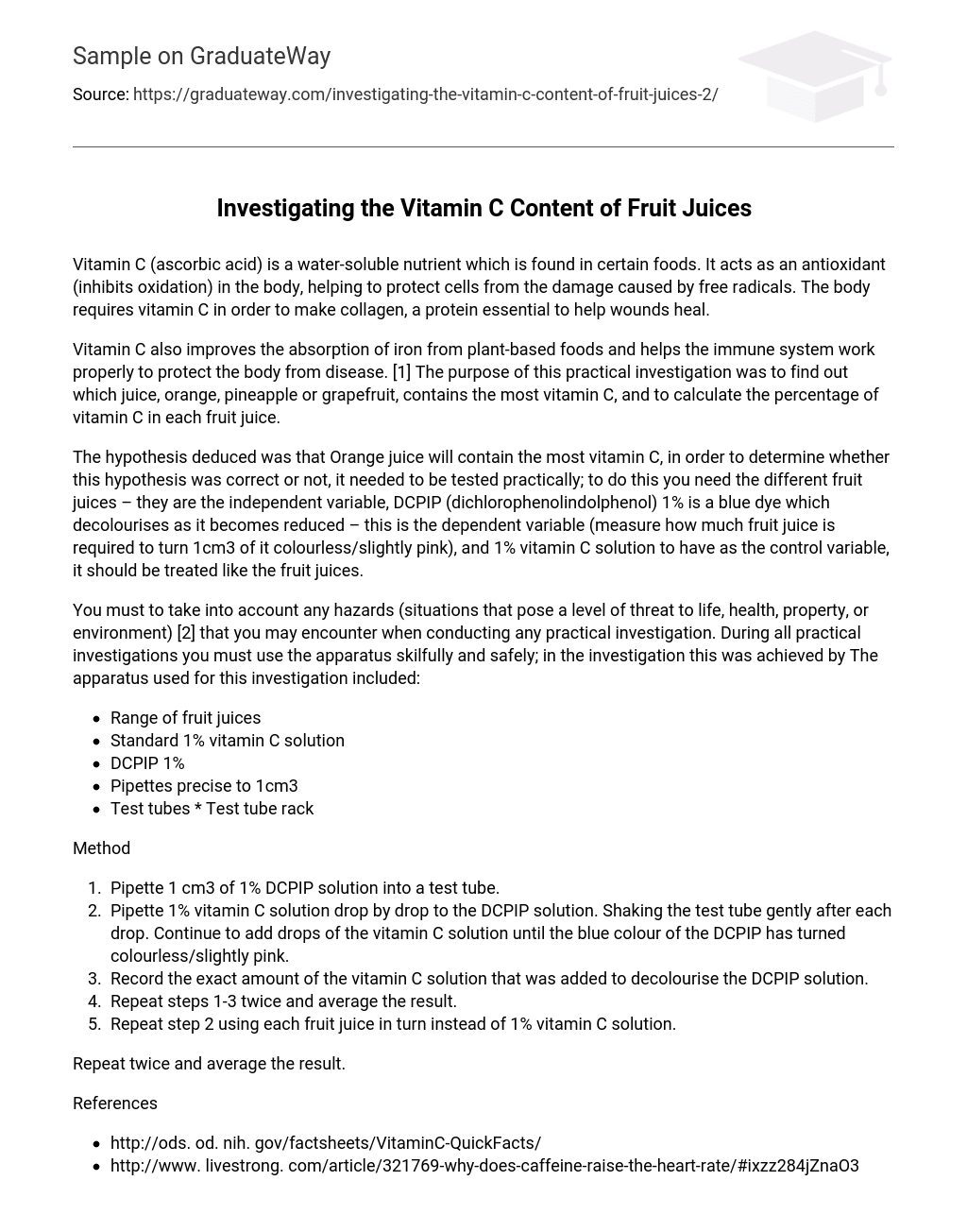Vitamin C, also called ascorbic acid, is a water-soluble nutrient present in specific foods. It serves as an antioxidant and safeguards cells against harm caused by free radicals. Furthermore, vitamin C has a crucial function in collagen synthesis, which is essential for wound healing.
The objective of the investigation was to ascertain which fruit juice, specifically orange, pineapple, or grapefruit, contained the greatest concentration of vitamin C. Furthermore, it aimed to quantify the percentage of vitamin C in each juice. Vitamin C is recognized for its capacity to improve the absorption of iron from plant-based foods and bolster the immune system’s ability to combat diseases.
The hypothesis was that Orange juice contains the most vitamin C. To test this, a practical experiment was conducted using various fruit juices as the independent variable. The dependent variable used in the experiment was DCPIP (dichlorophenolindolphenol) 1%, a blue dye that loses color when reduced. The goal was to measure how much fruit juice is needed to completely remove color from or slightly pinken 1cm3 of DCPIP. A control variable consisting of a 1% solution of vitamin C underwent similar treatment as the fruit juices.
When conducting a practical investigation, it is vital to acknowledge and address any potential hazards that may be present. Hazards encompass situations that can endanger life, health, property, or the environment [2]. It is of utmost importance to handle the equipment with caution and adhere to safety measures throughout the investigation. The specific apparatus employed in this inquiry consists of:
- Range of fruit juices
- Standard 1% vitamin C solution
- DCPIP 1%
- Pipettes precise to 1cm3
- Test tubes * Test tube rack
Method
- Pipette 1 cm3 of 1% DCPIP solution into a test tube.
- Pipette 1% vitamin C solution drop by drop to the DCPIP solution. Shaking the test tube gently after each drop. Continue to add drops of the vitamin C solution until the blue colour of the DCPIP has turned colourless/slightly pink.
- Record the exact amount of the vitamin C solution that was added to decolourise the DCPIP solution.
- Repeat steps 1-3 twice and average the result.
- Repeat step 2 using each fruit juice in turn instead of 1% vitamin C solution.
Repeat the process two times and find the average of the outcome.
References
- http://ods. od. nih. gov/factsheets/VitaminC-QuickFacts/
- http://www. livestrong. com/article/321769-why-does-caffeine-raise-the-heart-rate/#ixzz284jZnaO3





